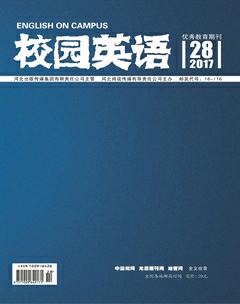Study of Subjectivity on the Basis of the Translation of Le Rouge et le Noir by Xu Yuanchong
项芬+张艳霞
【Abstract】Le Rouge et le Noir told us a story about Julien Sorel of his struggle and two periods of love affairs through which it revealed the great conflicts between different classes during the restoration times. This thesis mainly analyzes this book translated by Xu Yuanchong from the perspective of translators subjectivity including initiative, passivity and egoism. Each part elaborates the connotation of the two aspects carefully and analyzes the advantages and disadvantages of the edition translated by Mr. Xu.
【Key words】translators subjectivity; Le Rouge et le noir; translation versions
Chapter 1
A Brief Introduction to Translators Subjectivity
Translators subjectivity has three features:initiative, passivity and egoism, which is to say, a combination of positive and passivity is required from the perspective of translators subjectivity. Since a long time ago many people lack understanding about translators motility. Actually, translators can employ their motility from several aspects:selecting source text, choosing translation principles, comprehending and the way of expression. However, on the other hand, translators are restricted more or less by some factors:social background, sponsors, culture misinterpretation, source text, translators training, accomplishment and so on. Mans subjectivity includes two parts:initiative and passivity. Passivity reveals a fact that men have a sense of dependence and restriction on objects. As men create the world with their initiative also depends on passivity. Generally speaking, mans passivity can be divided into exterior passivity and interior passivity. Exterior passivity means men are usually confined by external factors like objective rules, conditions, means and social relations and so on.
Chapter 2
Manifestation of Translators Subjectivity in Xu Yuanchongs Translation of Le Rouge et le Noir
2.1 Initiative and motility
The initiative mentioned in this thesis is referred to a way that a translator thinks best to translate. It is different from creativity even though they have something in common. Creativity is usually expressed in translation process while initiative can be expressed before the process or after the process. In fact, they are often hindered by some objective and subjective factors. Thus, there is no exception in literary translation. The literary works is a reflection and symbol of a country and a nation.
Ah! voici lhomme desprit par excellence, M. le baron B?ton, dit Mlle de la Mole, imitant un peu la voix du laquais qui venait de lannoncer .endprint
Je crois que même vos gens se moquent de lui. Quel nom, baron B?ton! dit M. de Caylus.(Gall?mard Folio)
——“啊!又来了一个绝顶聪明的人,巴东男爵先生。”德·拉莫尔小姐说时,有点模仿通报姓名的仆人,把“巴东”说成“扒洞”。
“我想,甚至府上的仆人也在拿他开玩笑。多怪的名字,扒洞男爵退”德·吕先生说。(许译)
Actually, the source text is simple. However, a French word makes it difficult translate well. The word means cudgel but is used as a name. It is a common practice in French grammar which causes trouble to translate it well into Chinese. Neither transliteration nor free translation can well express the original spirit. Under this kind of circumstance Mr.Xu dealt with it in his own way rather than being restricted by the original text. His initiative and motility propel him to create his own translation style which is called “recreation”.
2.2 Passivity and non-motility
Traditional translation theory mainly discusses translation from the view of linguistic study in order to produce a translation that is equivalent to the source text on the basis of loyalty and equivalence. We admit they do give full play to their initiative but they sometimes neglect translators passivity. As a matter of fact, translation, fiction or nonfiction, always needs to find a point that can balance translators motility and their passivity. Although initiative is the essence and expression of translators, passivity also plays an important role in translating literary works. That is also why “faithfulness” has won most peoples approvals.
Chapter3:Conclusion
The novel Le Rouge et le Noir succeeded in shaping a character named Julien Sohill that made Stendhal world famous. The whole thesis analyzed Xu Yuanchongs translation version from the perspective of translators subjectivity which includes three parts:initiative, passivity and egoism. I also compare Xus translation with other famous translators works. In a word, from this thesis I have learned to unite the translators consciousness of creativity and self-restraint, hoping to promote the translation practice and translation studies in the future.
References:
[1]Bassnett,Susan.1998.Constructing Cultures:Essays on Literary Translation[M].Beijing:Beijing University Press.56-58.
[2]胡庚申.從“译者主体”到“译者中心”[J].中国翻译,2004 (03):77-78.endprint

